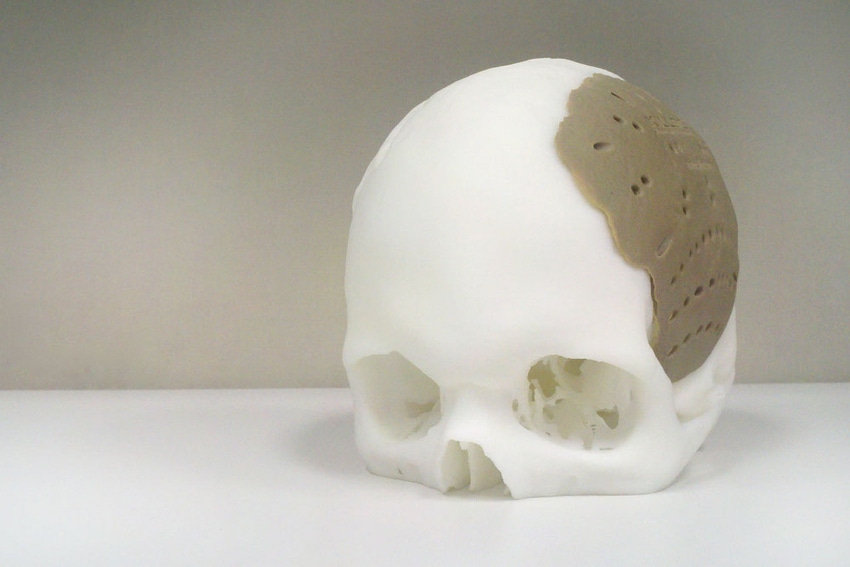3D-printed PEKK stakes out implant position
Oxford Performance Materials (OPM), which has been developing polyetherketoneketone (PEKK) as a medical implant plastic, has received FDA 510(k) clearance for its OsteoFab Patient Specific Cranial Device (OPSCD)."OsteoFab" implants are made from PEKK with additive manufacturing technology. According to OPM, it is the first approval for an additively manufactured polymer implant.
April 2, 2013

Oxford Performance Materials (OPM), which has been developing polyetherketoneketone (PEKK) as a medical implant plastic, has received FDA 510(k) clearance for its OsteoFab Patient Specific Cranial Device (OPSCD).
"OsteoFab" implants are made from PEKK with additive manufacturing technology. According to OPM, it is the first approval for an additively manufactured polymer implant.
"It is our firm belief that the combination of PEKK and additive manufacturing is a highly transformative and disruptive technology platform that will substantially impact all sectors of the orthopedic industry," said Scott DeFelice, CEO of OPM in a press release. "We have sought our first approval within cranial implants because the need was most compelling; however, this is just the beginning. We will now move systematically throughout the body in an effort to deliver improved outcomes at lower overall cost to the patient and healthcare provider." DeFelice did not respond to a request for an interview.
OPM makes its own devices and also makes custom parts for customers.
The company was founded in 2000 by DeFelice and Severine Zygmont to develop PEKK, which it describes as a high-performance polymer that is biocompatible, mechanically similar to bone, and radiolucent so as not to interfere with X-ray equipment. OPM says it has recently completed testing showing that the OsteoFab implant surface is osteoconductive, meaning that bone grows on the surface.
Arkema acquired American Oxford Performance Materials and its PEKK intellectual property in 2009. The founders reacquired the medical part of the business and the OPM name in 2011, saying that medical business development required a smaller, nimble organizational structure. OPM is now seeking partners to commercialize the business.
The company moved into a new 18,000-sq-ft facility in South Windsor, CT with expanded clean rooms and an EOSINT P 800 SLS machine in September, 2011. The funding for the additive manufacturing equipment was provided by the Connecticut Innovations, Inc.'s BioScience Facilities Fund. Financing was in the form of special debt instrument.
There are 14 grades of OxPEKK available including crystalline, amorphous and reinforced versions.
Polyarylesterketones are rapidly rising in importance as an implantable plastic. The most widely used for implants at this time is polyetheretherketone (PEEK), which is available from Victrex as Optima and Solvay Specialty Polymers as Zeniva. Medical grade PEKK is sold by Oxford Performance Materials as OXPEKK and from CoorsTek as BioPEKK. Other materials that may be used include polyetherketone (PEK), polyetherketoneether-ketoneketone (PEKEKK), and polyetheretherketoneketone (PEEKK).
Each chemical variant offers slightly different properties.
You May Also Like


